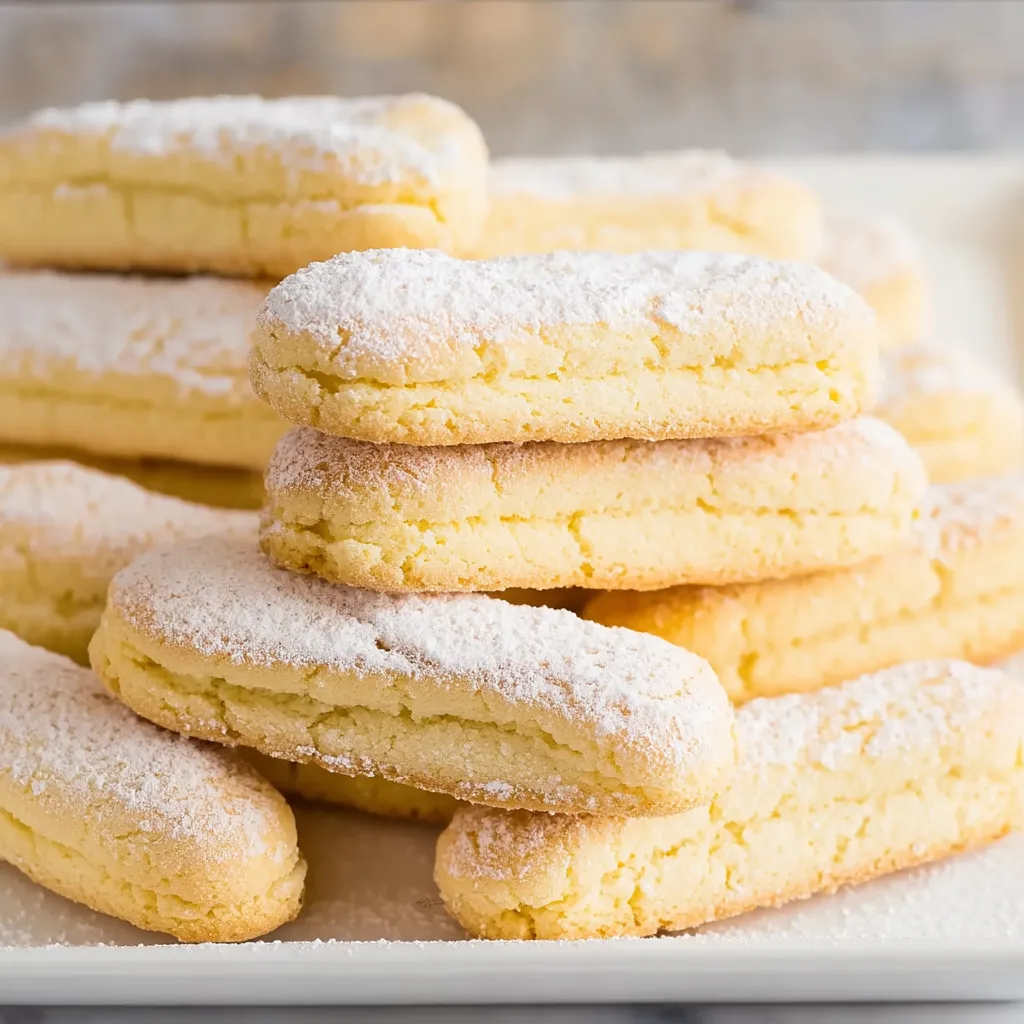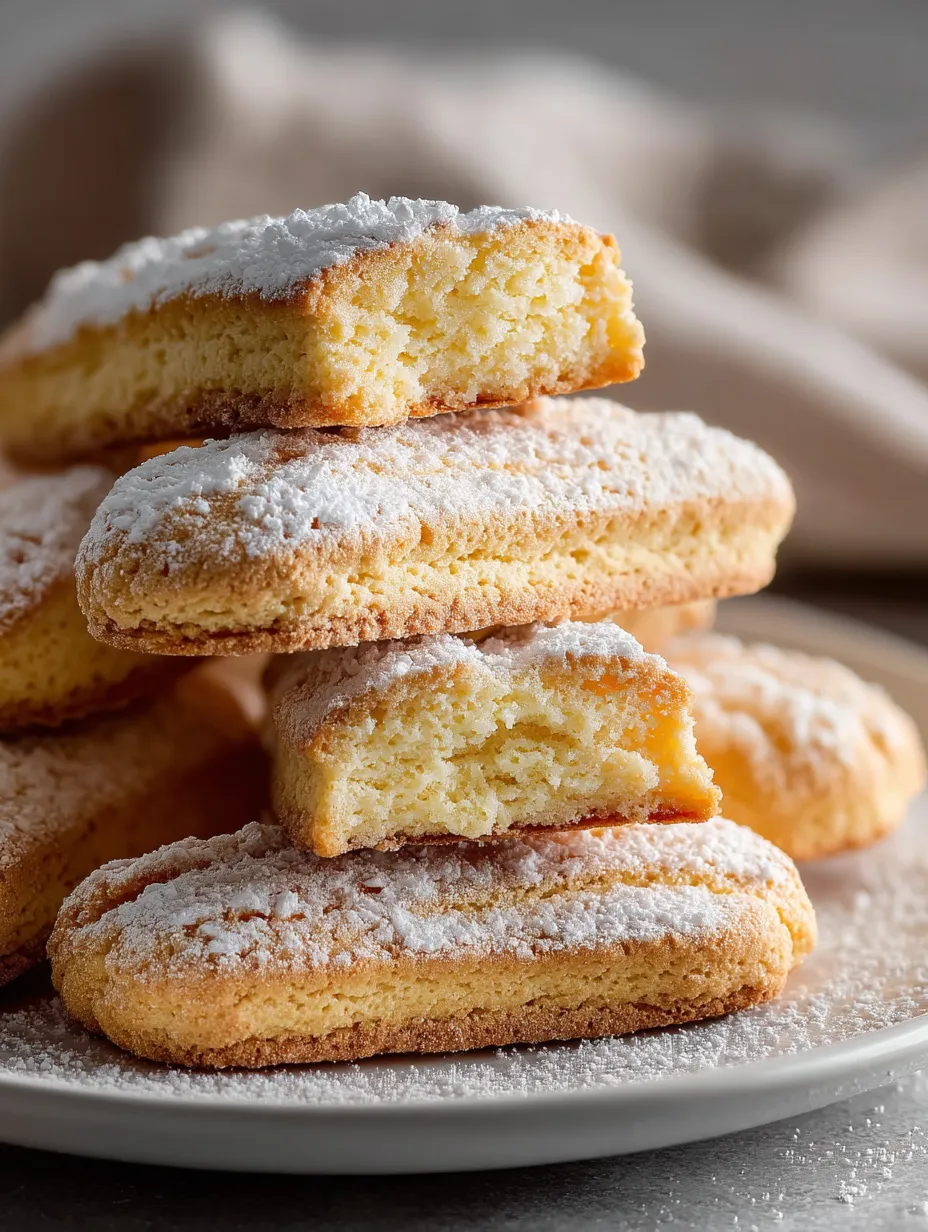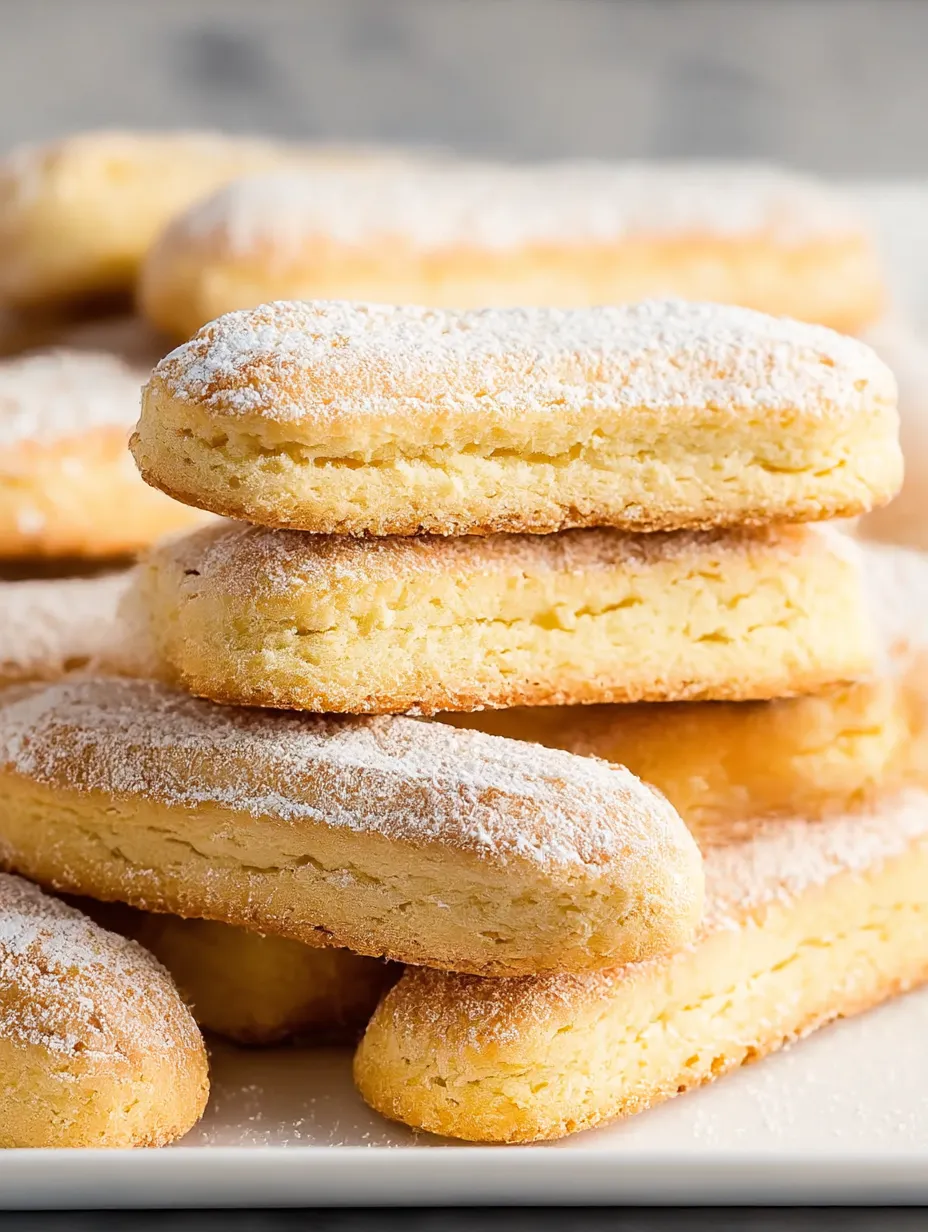 Pin it
Pin it
These light and airy ladyfingers turn out wonderfully crisp on the outside while staying soft inside. They'll upgrade any dessert they're part of. After buying them from stores for ages, I finally tried making them at home and discovered they're way fresher and have a much better texture, especially for dishes like tiramisu and trifles.
I first baked these ladyfingers when I wanted to make a special tiramisu for my parents' anniversary. The difference was so amazing that I can't bring myself to use store-bought anymore. Seeing how happy they were when tasting that dessert makes this recipe really meaningful to me.
Ingredients
- 4 large eggs: Make sure they're room temp before separating for best fluffiness
- ⅔ cup granulated sugar: Gives just the right amount of sweetness
- ½ teaspoon vanilla extract: Adds a subtle but lovely flavor
- 1 cup all purpose flour: Forms the backbone of the cookie texture
- ½ teaspoon baking powder: Adds just enough rise without going overboard
- 2 tablespoons cornstarch: The key to making them dissolve in your mouth
- Powdered sugar: Dusting the top stops spreading and makes a nice crust
Step-by-Step Instructions
- Get Everything Ready:
- Put your oven rack in the middle and heat to 350°F. Cover two baking sheets with parchment and get a big pastry bag with a plain ½-inch round tip. Good prep means your cookies will turn out evenly shaped and properly baked.
- Beat The Whites:
- Put your egg whites in a big bowl and mix on high until they start forming soft peaks. Slowly add 2 tablespoons of sugar while mixing until they look shiny and stiff. This creates the light, fluffy texture that makes these cookies special.
- Mix The Yolks:
- In another bowl, beat the egg yolks with the rest of the sugar and vanilla for about 2 minutes on medium-high until they turn pale yellow and thicken up. This rich mixture balances out the airy whites.
- Bring Everything Together:
- Using a rubber spatula, carefully fold half the whites into the yolk mixture. Sift the dry stuff in and fold just enough to mix it. Add the last of the whites and fold gently to keep as much air as possible.
- Shape And Sugar:
- Put the batter in your pastry bag and pipe 3-inch fingers about an inch wide, leaving 2 inches between them. Sprinkle lots of powdered sugar on top before baking. This step is crucial for that classic crisp crust.
- Bake Until Done:
- Cook until they feel firm when touched and look slightly golden, about 12-15 minutes. Let them cool completely on the baking sheet before moving to a rack. Taking your time here lets the texture set up right.
 Pin it
Pin it
The cornstarch in this recipe is my favorite part. I figured out how important it is after making several batches that came out too heavy. That little bit of cornstarch gives these cookies their melt-in-your-mouth quality, which my friends always notice when I serve these with afternoon tea.
Storing Your Treats
Keep your homemade ladyfingers in a sealed container at room temp. They'll last up to two weeks, but they're best in the first three days. If your kitchen gets humid, put parchment paper between layers to keep them crisp. Funny enough, when they start getting a bit stale after a few days, they actually work better in tiramisu since they soak up the coffee mix without turning to mush.
Fixing Common Problems
If your ladyfingers come out flat, you might not have whipped the egg whites enough or your oven temp might be off. Always use eggs that have sat out for a bit and think about getting an oven thermometer for better results. If the piped cookies spread too much before baking, your batter's probably too runny from underbeaten whites or too much folding. The powdered sugar on top also helps stop spreading by creating a quick-setting outer layer in the hot oven.
 Pin it
Pin it
Traditional Dessert Uses
While they taste great on their own, ladyfingers really stand out in classic desserts. For a proper tiramisu, quickly dip them in coffee mixed with marsala wine before layering with mascarpone cream. For a summer trifle, arrange them around a glass bowl and add layers of vanilla custard and fresh berries. During holidays, I make a showstopping charlotte royale by lining a bowl with ladyfingers and filling it with bavarian cream. I love how many different ways I can use them for desserts.
The Story of Ladyfingers
These light sponge cookies go back to late 15th century Savoy courts where they were first made to welcome a visiting French royal. They're called "Savoiardi" in Italian and have been popular in European baking for hundreds of years. They've stayed around so long because they taste great and play an important role in many classic desserts. Knowing where they came from makes me appreciate these simple but special cookies even more.
Frequently Asked Questions
- → What's the best way to store them?
Keep them in a sealed container at room temperature for up to two weeks. If storing longer, freeze them with parchment paper layers in a freezer-safe container for up to a month.
- → Can I skip using a piping bag?
You sure can! Take a large plastic bag and cut off one corner—it works just like a piping bag.
- → Why are my lady fingers not crunchy?
If you don't delicately fold the mixture or forget to dust with sugar, they might turn out softer. Handle the batter gently for the right texture.
- → Is it okay to add other flavors?
Absolutely! Try mixing in lemon zest, almond essence, or any flavor to jazz them up.
- → How do I know they're ready?
The cookies are done when they're lightly golden and firm to touch. Be careful not to overbake to keep them delicate.
